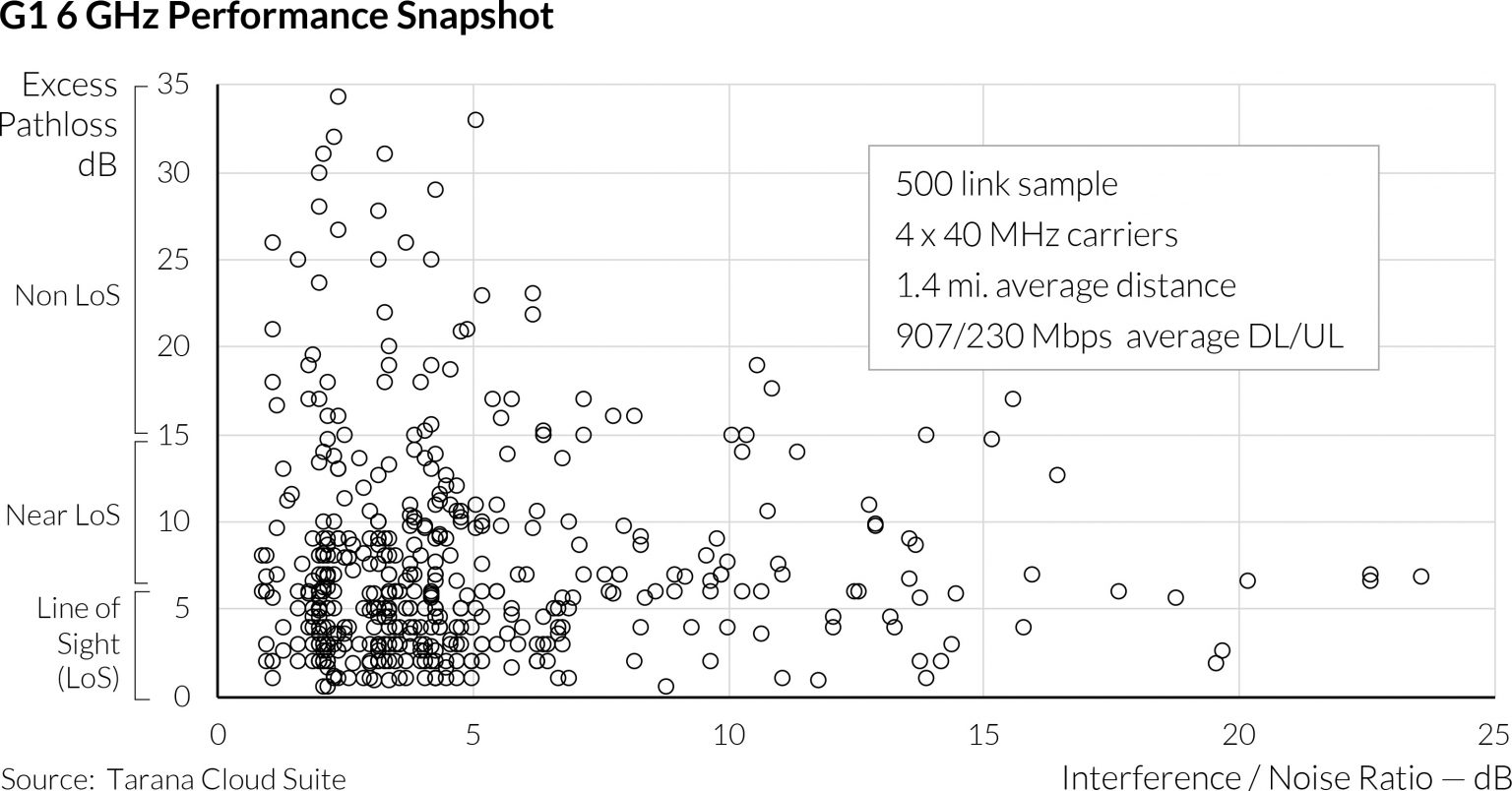Save Your Mobile 5G Spectrum
Save Your Mobile 5G Spectrum
Summary
The High-Stakes Challenges for Spectrum
In 2020, U.S. operators poured a massive $80 billion into the FCC’s C-band auction — a testament to fast-rising demand for spectrum. Now, as data consumption surges, operators are under immense pressure to expand network capacity and leverage their spectrum investments for maximum revenue.
This challenge is even more pressing for mobile operators deploying 5G fixed wireless access (FWA) on licensed spectrum. With FWA users consuming nearly 30 times more data than smartphone users, the need to safeguard spectrum assets has become an urgent priority. Proactive management is no longer optional—it’s critical for continued success.
Yet, in the search for capacity, a resource with huge potential remains largely ignored: over 1,000 MHz of unlicensed spectrum in the CBRS, 5 GHz, and 6 GHz bands. Conventional wisdom dismisses all this as unreliable—plagued by interference, poor coverage, and unpredictable performance.
Obviously any technology that could deliver reliable, cost-effective service in this spectrum would be a game-changer. Operators could then use unlicensed spectrum with confidence to offload and expand critical FWA services.
Enter Tarana’s ngFWA platform.
With Tarana’s breakthrough technology, everything changes. Operators can now confidently harness unlicensed spectrum, unlocking fiber-class connectivity at a fraction of the cost. Moreover, this hybrid approach conserves licensed spectrum for its best use case, namely mobile traffic. Meanwhile, unlicensed spectrum, coupled with Tarana’s innovative technology, becomes a viable option that offers licensed-class performance for fixed wireless applications. This is particularly relevant in fixed scenarios where devices cannot change cells to avoid interference or poor-quality connections.
Tarana’s Next Generation of FWA
Tarana’s innovative breakthroughs enable an entirely new approach to building and growing fixed wireless access networks that make gigabit broadband possible where legacy fixed wireless would fail. This includes:
- Unprecedented Interference Cancellation: Tarana’s fundamental innovations in interference and noise cancellation ensure reliable, high-speed connectivity even in crowded, noisy RF environments. Its unique asynchronous burst interference cancellation (ABIC) technology all but eliminates the impact of bursty interference, such as from nearby Wi-Fi transmitters. Less interference means more reliable, higher-speed connections.
- Superior Non-Line-of-Sight (NLoS) Performance: Trees, structures, and terrain features can block other wireless technologies, making links practically unusable. Tarana overcomes this with fine-grain, collaborative Tx and Rx digital beamforming, using distributed massive MIMO at both ends of each link, and essentially perfect multipath integration.
- Scalability and Speed: Operators can deploy gigabit broadband at a large scale in weeks, not months or years. High-speed connectivity is deployed faster, accelerating service and revenue timelines quickly, efficiently, and affordably.
When comparing unlicensed spectrum using Tarana to a typical 5G NSA or SA network, the differences are clear:
Licensed + Unlicensed: A Future of Collaboration
Licensed and unlicensed aren’t competitors. With the right technology, they’re allies in delivering ever higher capacity and connectivity. While licensed bands provide the crucial backbone for mobile networks, unlicensed spectrum enables a complementary ecosystem that powers broadband access, smart homes, industrial IoT, and more.
Service providers no longer have to choose between capacity and cost — with Tarana, they can have both. With the right balance between licensed and unlicensed, forward-thinking operators can unlock unprecedented capacity, efficiency levels, innovation, and new revenue streams.
The Game-Changer for Service Providers
Tarana’s ngFWA platform is rewriting the rules, unlocking the massive potential of unlicensed spectrum with unprecedented reliability, performance, and ROI.
Tarana transforms unlicensed spectrum into a powerful tool for broadband delivery, allowing operators to offer speeds up to 1 Gbps/500 Mbps while alleviating pressure on costly licensed spectrum — all without expensive mobile core costs (e.g., UPF expansion).
By leveraging Tarana’s ngFWA platform, service providers can:
- Seamlessly and reliably integrate unlicensed spectrum into existing networks.
- Easily expand capacity without increasing costs.
- Monetize spectrum more effectively and open new revenue streams.
This is not just about alternative spectrum — it’s about completely reshaping the economics of broadband deployment.
Learn More
Our site offers a number of resources to help you learn more about the technology, product, and operator engagement stories behind this story.
Our executive summary provides a concise introduction to the context, key characteristics, and outcomes of our unique advances in fixed wireless technology.
That summary includes a profile of ample field evidence of the unprecedented speeds, distances, relative immunity to obstructions and interference, and hence performance reliability in the 5 and 6 GHz bands our customers are achieving — reflecting stats from a sample of 100,000 links in operation by 250 ISPs in 24 countries. Below is a preview example, focused on a sample of 4×40 MHz carrier links in 6 GHz, delivering gigabit-class service in the face of real-world challenges.

Further, we have a customer’s report on how G1 outperformed 3GPP FWA technology in side-by-side testing in a typical fixed-application scenario — achieving typically 4 to 5x speeds and solid performance over obstructed links, some of which the 3GPP alternative couldn’t connect at all.
Our product page provides an introductory overview of the system, including its simple TR-101 broadband network architecture, which requires no conventional mobile core elements at all, making deployment a relative breeze. And finally, our Learn More section offers a wealth of additional information about Tarana network economics, customer case studies, and deeper dives on the technology.